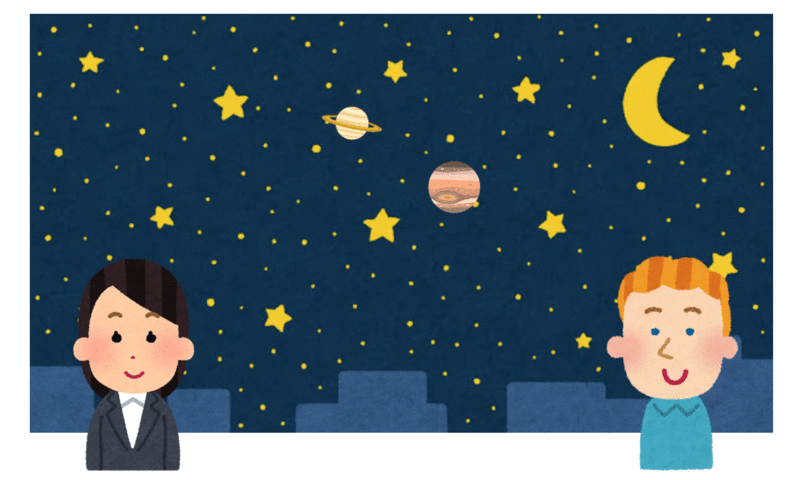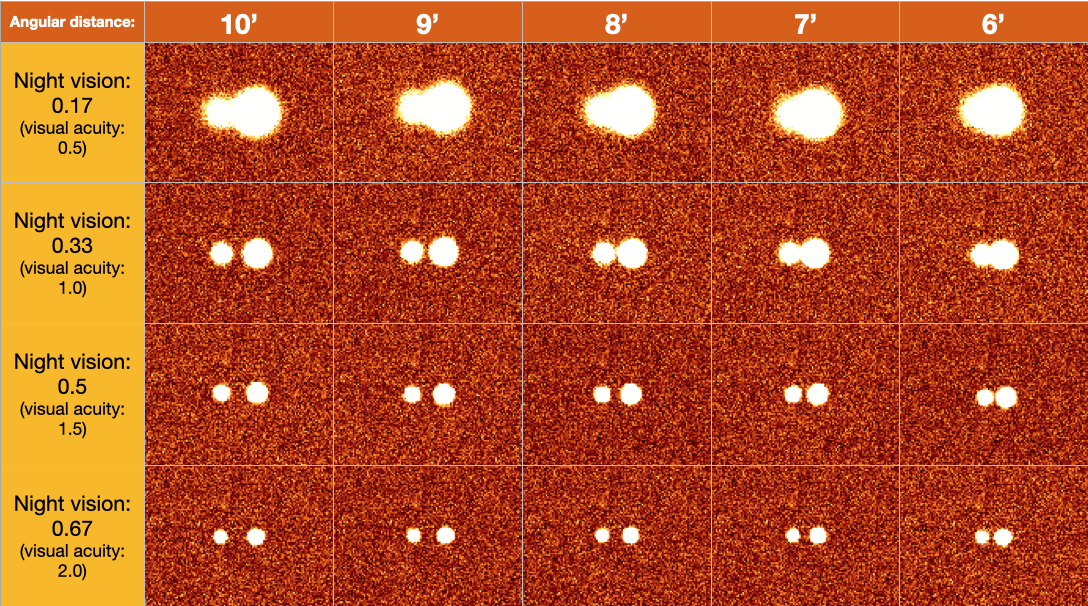
The "extra-close" encounter of Jupiter and Saturn is the encounter with the mystery of the starry sky.
The aim of this project
This "extra-close" encounter of Jupiter and Saturn(Note 1) is a rare astronomical phenomenon that can be seen once in a lifetime or never seen, and it is an event that you definitely want to see. We would like to enjoy the "extra-close" encounter of these two planets with people all over the world. And we hope it will give you a chance to see the starry sky.
The starry sky always looks similar, but no starry sky is the same as on other nights.The moon is changing shape and moving from west to east. Planet is changing the position little by little in the stars, it has been fascinating people since ancient times. Venus can become a morning star or an evening star. Mars sometimes approaches very close to Earth and brighten. Jupiter and Saturn, the leading roles of this time, also slowly orbit the celestial sphere. In addition, sometimes bright naked-eye comets come. Looking at such a starry sky, we cannot help remembering that the earth we live in is one of the celestial bodies in the universe.
When carefully watching the starry sky, you will notice various things, for example, difference in colors of stars, difference between planets and stars in how they shine, diurnal motion, and double stars. Then you may wonder "Why can't we see the stars (first-magnitude stars) in the daytime?", or "Why can we see the Milky Way in the dark?". There are many such unexplained mysteries in the starry sky. In this project, we will seek clues to unravel the mystery related to watching starry skies by asking many people around the world to observe and report on the "extra-close" encounter of Jupiter and Saturn.
(Note 1) We think that it is important to understand physiological phenomena such as changes in pupil diameter and differences in the functions of photoreceptor cells (cones and rods) along with night vision.
Do they look like one, or look like two? Night vision holds the key.
In order to unravel the mystery, we believe that "how much human vision changes (decreases) under the starry sky", so to speak, "night vision (scotopic vision, or visual acuity under low-lit conditions)" is the key.(Note 2) This is because Jupiter and Saturn approach each other day by day (changing their angular distance), with the closest angular distance being about 6 arcmin. By challenging (observing) whether Jupiter and Saturn can be seen separately, you can measure your own night vision.

-- We assume that the night vision (the visual acuity under low-light conditions) is three times lower than the photopic vision (visual acuity under well-lit conditions). Jupiter's Galilean moons or Saturn's rings are not considered. --
(Note 2) We think that it is important to understand physiological phenomena such as changes in pupil diameter and differences in the functions of photoreceptor cells (cones and rods) along with night vision.
Useful items
References
Project members (in alphabetical order) / Roles
- Kazuya Ayani / International cooperation, especially with Astronomers Without Borders
- Naohito Fukuhara / Web development
- Yoshiko Fukuhara / Web usability evaluation
- Takahiro Fukuzumi / Public relations collaborating with related facilities
- Takeshi Inoue / General planning
- Kenzo Kinugasa / Public relations via SNS
- Yasuhiko Murakami / Public relations collaborating with JAPOS
- Hiroyuki Naito / Project manager
- Shin-ya Narusawa / Future plan
- Kouji Ohnishi / Promoting science
- Kazuhiko Ohnuma / Specialist on ophthalmological optics
- Junko Uematsu / Illustrator
- Yoshiya Watanabe / Public relations collaborating with "Hoshi-no-rentai"
Supporters (in alphabetical order)
-
(Individuals)
- Hasan Baghbani (Iranian Teachers Astronomy Union)
- Jooyeon Geem (Seoul National University)
- Masateru Ishiguro (Seoul National University)
- Raymond Liu (Hunan First Normal University) (Groups)
- AstroArts Inc.
- Astronomers Without Borders
- Japan Public Observatory Society (JAPOS)
- Nayoro Observatory
- T.M.I. Company,Limited
